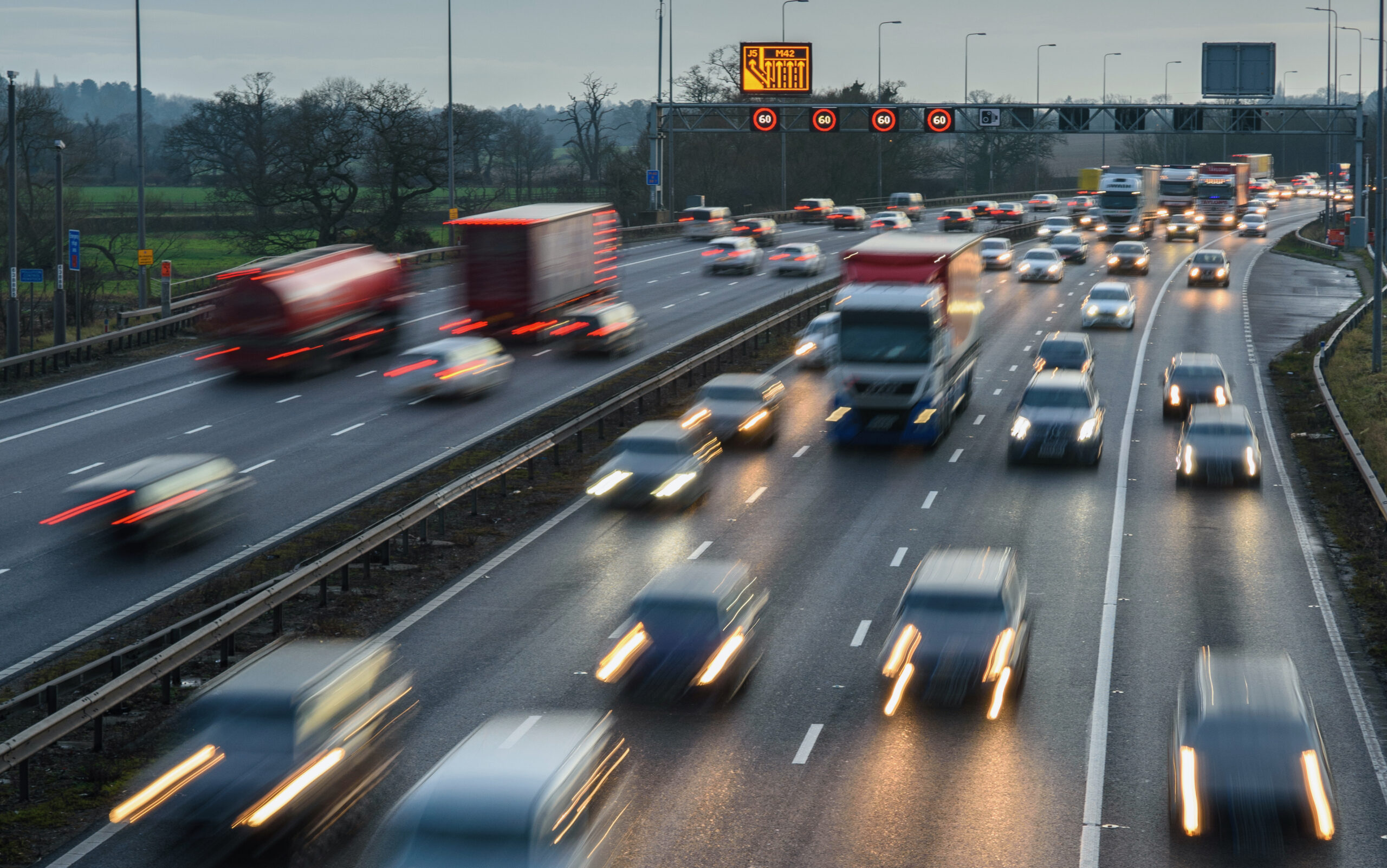Focus shifts from all-lane running
The government decision to cancel all future smart motorway schemes has shifted attention onto the fate of those existing schemes that have dynamic hard shoulders.
While public concern has centred on motorways operating all-lane running – where the hard shoulder has been turned into a permanent extra lane – there remain several stretches of road where the hard shoulder is only utilised as a running lane when traffic is particularly heavy.
The government announced that 14 smart motorway schemes in the pipeline would be abandoned.
However, seven of these projects were upgrades of existing dynamic hard shoulder schemes.
Jim O’Sullivan, a previous boss of Highways England (the predecessor to National Highways which manages England’s motorways and major A roads) told the Transport Select Committee (TSC) in October 2019 that the roads were “too complicated for people to use”.
In June 2021, Baroness Vere, the then roads minister, told another hearing of the TSC that the road markings of dynamic hard shoulder motorways could confuse drivers.
“It is counter-intuitive for drivers to drive over a solid white line. We believe that the dynamic hard shoulder is a less viable route to take forward because it causes confusion. There were 3.6 million misuses of the hard shoulder on dynamic hard shoulder motorways over a year. Either those drivers were confused—this is what we found out—or they used it to gain advantage.”
In its October 2021 report on smart motorways the TSC said:
“Dynamic hard shoulder motorways apparently confuse drivers, because the hard shoulder is used unpredictably to tackle congestion. A more consistent approach, where the hard shoulder is used at known times, could clarify the situation for drivers without physically removing the hard shoulder. The Department and National Highways should pause plans to convert dynamic hard shoulder motorways until the next Road Investment Strategy and use the intervening period to trial alternative ways in which to operate the dynamic hard shoulder to make the rules less confusing for drivers.”
However, the committee concluded that “we are not convinced that reinstating the hard shoulder on all all-lane running motorways will improve safety. The evidence suggests that doing so could put more drivers and passengers at risk of death and serious injury. The Government is right to focus on upgrading the safety of all-lane running motorways”.
“It is counter-intuitive for drivers to drive over a solid white line. We believe that the dynamic hard shoulder is a less viable route to take forward because it causes confusion. There were 3.6 million misuses of the hard shoulder on dynamic hard shoulder motorways over a year. Either those drivers were confused—this is what we found out—or they used it to gain advantage.”
Steve Gooding, director of the RAC Foundation, said:
“The focus will now shift to those motorways that continue to use the hard shoulder as an occasional live lane. The former boss of the organisation running our motorways called this type of system too ‘complicated’ for drivers to use, while a previous roads minister said they ‘caused confusion’.
“Given this, drivers will understandably ask if the plan now is to permanently restore the hard shoulder on these stretches of road? Ultimately, the rules, regulations and layouts of roads should be easy to understand whether people are driving along them at 70mph or 7mph.
“The simpler motorways are to understand the safer they will be, as motorists concentrate on the hazards ahead rather than grappling with which lanes are available to them and which are not.”
ENDS
Contacts:
Philip Gomm – Head of External Communications – RAC Foundation
020 7747 3445 | 07711 776448 | [email protected] | 020 7389 0601 (ISDN)
Notes to editors:
The RAC Foundation is a transport policy and research organisation that explores the economic, mobility, safety and environmental issues relating to roads and their users. The Foundation publishes independent and authoritative research with which it promotes informed debate and advocates policy in the interest of the responsible motorist.
The RAC Foundation is a registered charity, number 1002705.
These are the 14 schemes the government is cancelling.
New all lane running smart motorways
M3 junctions 9 to 14
M40/M42 interchange
M62 junctions 20 to 25
M25 junctions 10 to 16
Dynamic hard shoulder to all lane running conversions
M1 junctions 10 to 13
M4/M5 interchange (M4 junctions 19 to 20 and M5 junctions 15 to 17)
M6 junctions 4 to 5
M6 junctions 5 to 8
M6 junctions 8 to 10a
M42 junctions 3a to 7
M62 junctions 25 to 30
RIS3 (2025 to 2030) pipeline schemes
M1 North Leicestershire
M1 junctions 35a to 39 Sheffield to Wakefield
M6 junctions 19 to 21a Knutsford to Croft


